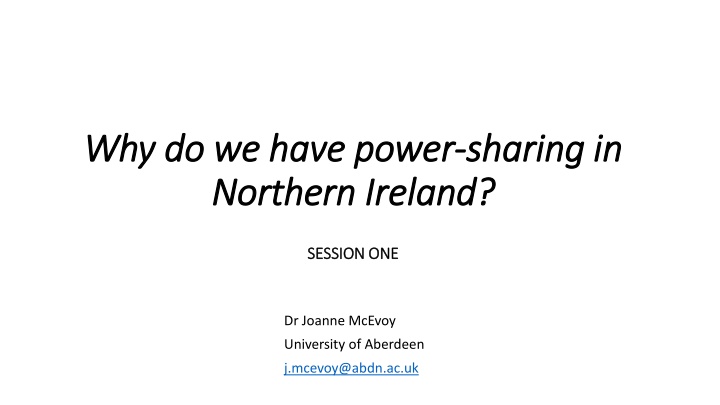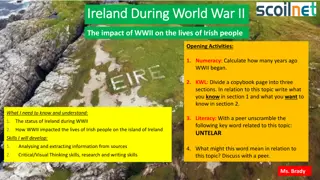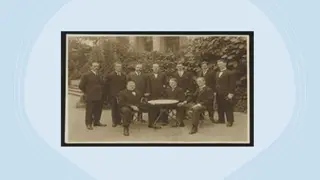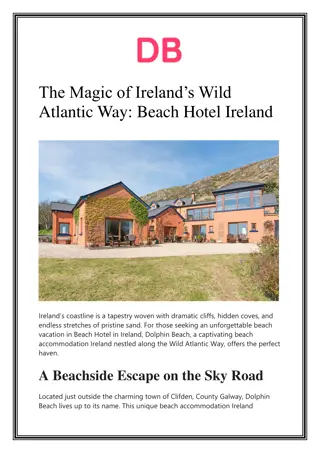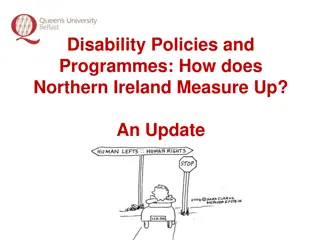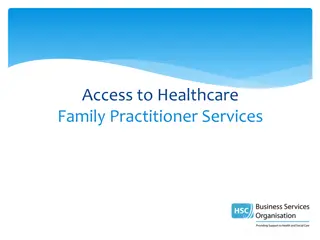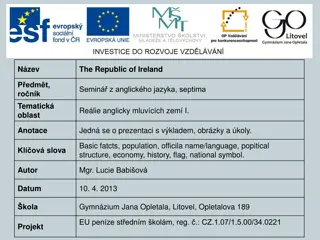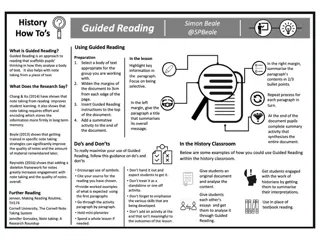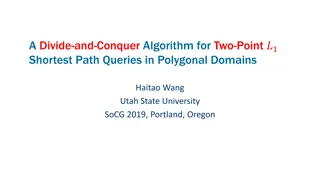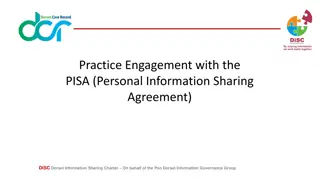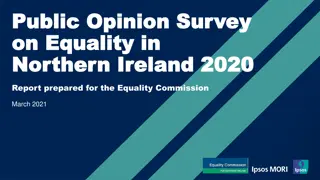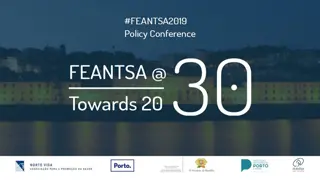Power Sharing in Northern Ireland: The Path to Inclusive Governance
The history and evolution of power-sharing in Northern Ireland, from the creation of the NI Parliament in 1922 to the 1998 Agreement emphasizing cross-community cooperation. The role of different political parties and citizens' support in shaping the power-sharing model, aiming for inclusivity and peace. The significance of Strand 1, 2, and 3 in the overall peace process, with a focus on the NI Executive's top posts and the multi-party involvement in decision-making.
Download Presentation

Please find below an Image/Link to download the presentation.
The content on the website is provided AS IS for your information and personal use only. It may not be sold, licensed, or shared on other websites without obtaining consent from the author.If you encounter any issues during the download, it is possible that the publisher has removed the file from their server.
You are allowed to download the files provided on this website for personal or commercial use, subject to the condition that they are used lawfully. All files are the property of their respective owners.
The content on the website is provided AS IS for your information and personal use only. It may not be sold, licensed, or shared on other websites without obtaining consent from the author.
E N D
Presentation Transcript
Why do we have power Why do we have power- -sharing in Northern Ireland? Northern Ireland? sharing in SESSION ONE SESSION ONE Dr Joanne McEvoy University of Aberdeen j.mcevoy@abdn.ac.uk
Context: the path to power Context: the path to power- -sharing in Northern Ireland sharing in Northern Ireland Creation of Northern Ireland Parliament 1922: Unionist/Nationalist tensions; Ulster Unionist Party dominant 1960s Civil Rights Movement and outbreak of violence ( the Troubles ) Closing of the NI Parliament in 1972 and return of direct rule until 1998 A failed attempt at power-sharing: 1973-74 Sunningdale plan; a moderate middle , inclusion of the minority nationalist community and the all-Ireland dimension (Council of Ireland) From mid 1980s: a rolling peace process; calls for devolution of power back to Stormont (Blair Government project for UK devolution) British and Irish Governments working together for a peace deal; committed to NI power-sharing and a North-South dimension
The 1998 Agreement and Cross The 1998 Agreement and Cross- -community Power Sharing Sharing community Power- - Getting to a deal: fully inclusive of unionists, nationalists, loyalists and republicans inclusivity central Power-sharing part of an overall peace package (arms decommissioning etc.) Power-Sharing as key aspect of Strand 1 (NI political institutions); also Strand 2 (North-South Ministerial Council) and Strand 3 (British-Irish Council) The NI Executive s top two posts (First Minister and Deputy First Minister): cross-community rationale (a UUP and SDLP deal); posts of equal power
Parties and citizens support for power Parties and citizens support for power- -sharing sharing For pro-Agreement Unionists: end the violence, secure NI s place in UK, return to devolution For Nationalists (Social Democratic and Labour Party): had long called for NI power-sharing and an Irish dimension (cross-border bodies) For Republicans (Sinn F in): as transitional to future Irish unity; strengthening of the Irish dimension; prisoner releases For Loyalists: secure NI s place in UK, establish devolved administration NI Referendum May 1998: turnout 81%: 71.1% yes and 28.9% no
The choice of the dHondt method to form the NI The choice of the d Hondt method to form the NI Executive Executive What procedure for allocating ministerial seats (number of seats for each party and which departments)? Bargaining among parties likely to be fraught. Portfolio allocation methods deemed to be more efficient. Familiarity with d Hondt from years of talks. How does d Hondt work? Executive seats allocated to parties in turn, based on their strength in the Assembly. Advantages of using d Hondt: full inclusivity rather than just exclusive moderate middle ; parties familiar with the procedure (used in European Parliament); principles of proportionality and automaticity (avoiding difficult negotiations) But criticisms: the charge of mandatory coalition ; absence of opportunity to negotiate ministerial positions and a Programme for Government and to build trust
Power Power- -sharing problems and its defence sharing problems and its defence Hampered by political stalemate, instability, suspensions Party disagreements over policy which threaten the institutions Need for British Government to get involved (and Irish Government to encourage resolution) What s known as the power-sharing dilemma (peace but sporadic stalemate); (happens in other similar systems around the world too (NI not unique) Power-sharing remains the default; the only show in town ; a question of institutional reform to help make it work better
Summary: Why Power Summary: Why Power- -Sharing in NI? Sharing in NI? Historical path to cross-community executive power-sharing as a means to move on from conflict, return devolution, promote peace and democracy Compromise for the political parties in 1998; the best/only way to have devolved government within UK; or open-ended; view that the two main communities must share power Power-sharing as a challenging journey (stalemate, suspensions) but has helped maintain overall peace Moving on, need to address instability: question on whether to reform, when and how? What choices available? Minor tweaking or more radical reform?
